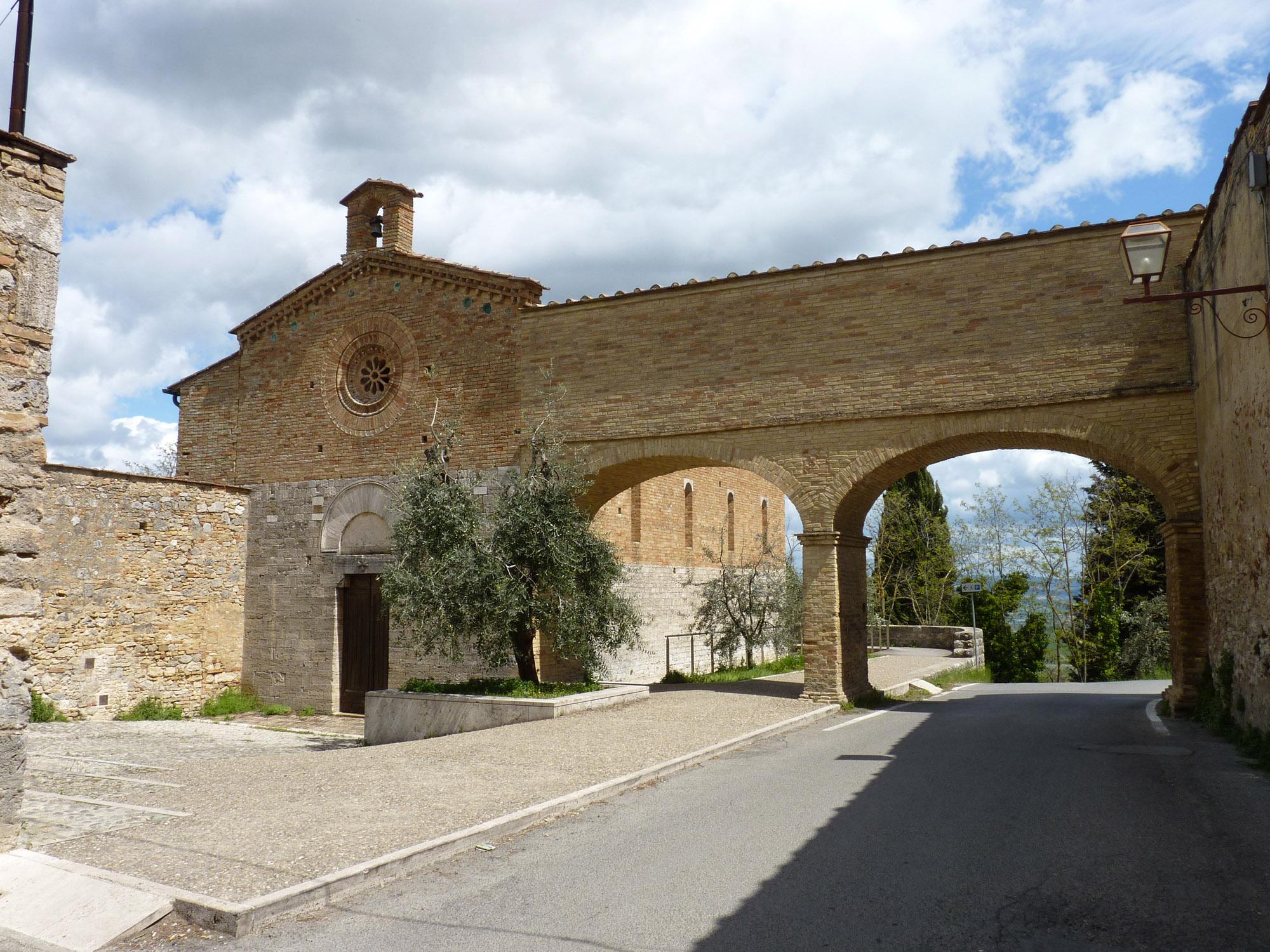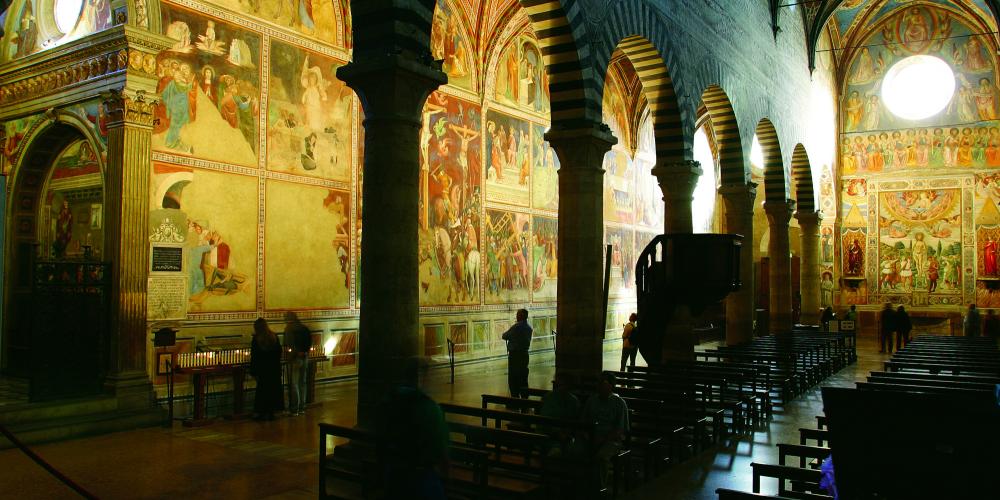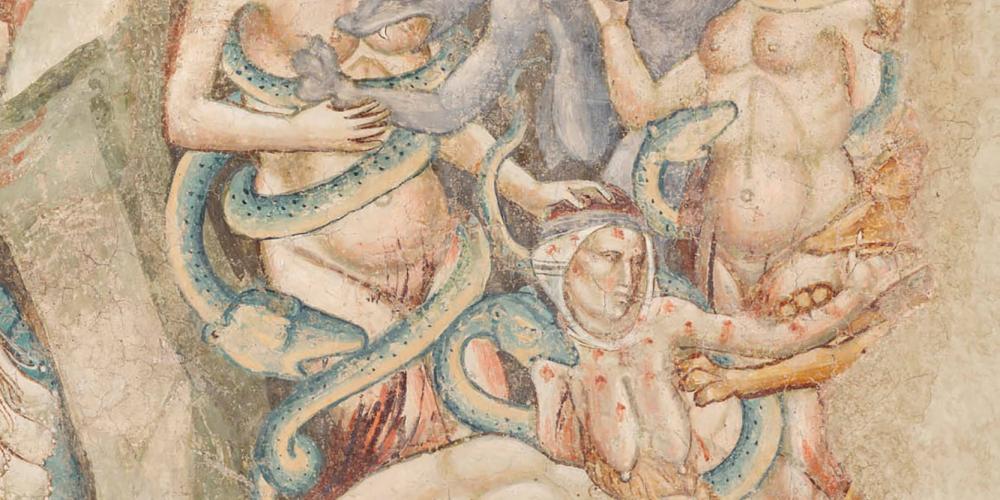Duomo of San Gimignano, nearby Churches and Monasteries, and the story of Saint Fina

The Duomo of San Gimignano is undoubtedly one of the city's most significant monuments. The church's internal space is laid out in a traditional basilica structure. The walls and ceiling, fully covered with frescos representing episodes from the New and the Old Testament, were painted by eminent artists of the 13th century Sienese School.
Within the Duomo is a true pearl of the Reinassance: the Santa Fina Chapel. Here three great Florentine artists worked together: an architect, Giuliano da Maiano; a sculptor, Benedetto da Maiano; and a Painter, Domenico Ghirlandaio. This masterpiece is dedicated to the beloved Saint of San Gimignano whose remains are kept in a glass urn under the Chapel’s altar.
Saint Fina was born in 1238 from a disgraced noble family of San Gimignano, and died, tragically young, in 1253. At ten years old she was struck by a severe illness that left her paralysed. She embraced her sufferings for the love of Christ and decided to spend the rest of her days lying on a wooden table to experience the suffering of Jesus on the cross.
Besides the Duomo, there are a whole host of wonderful churches.
In a peaceful square in the historic centre, you will find Sant’Agostino Church with a single nave in Romanesque style with Gothic elements, completed in 1298.

Near the entrance to the city walls, you'll find the Church of San Jacopo dei Templari. According to tradition, the Knights Templar of Jerusalem erected this Roman church after returning from the First Crusade, though it was actually built later. Don’t miss San Lorenzo in Ponte, a little church with incredible frescos about Hell and Purgatory according to Divina Commedia tradition. This church is precious to the community due to a miraculous Madonna fresco thought to be by Simone Martini.


